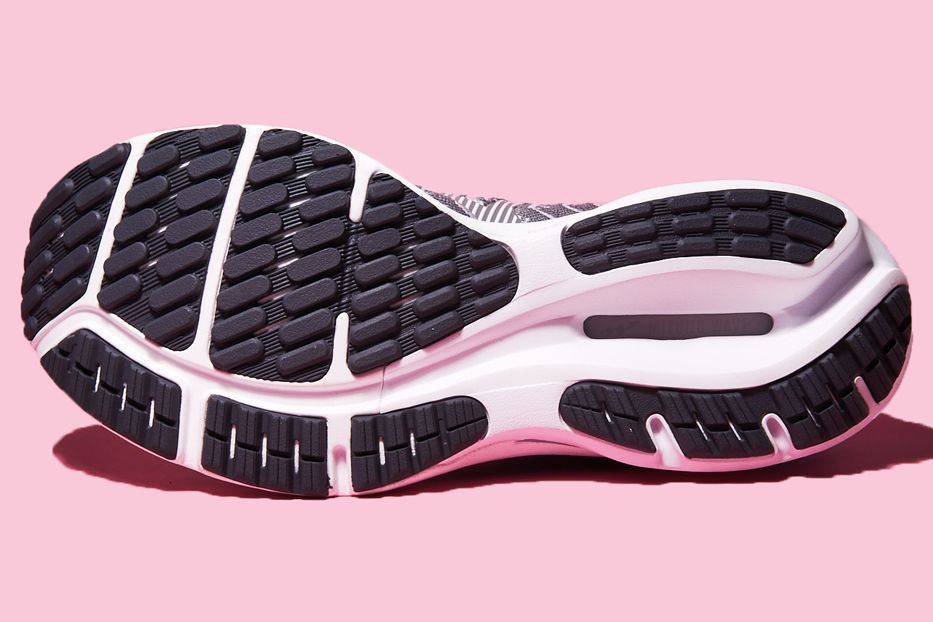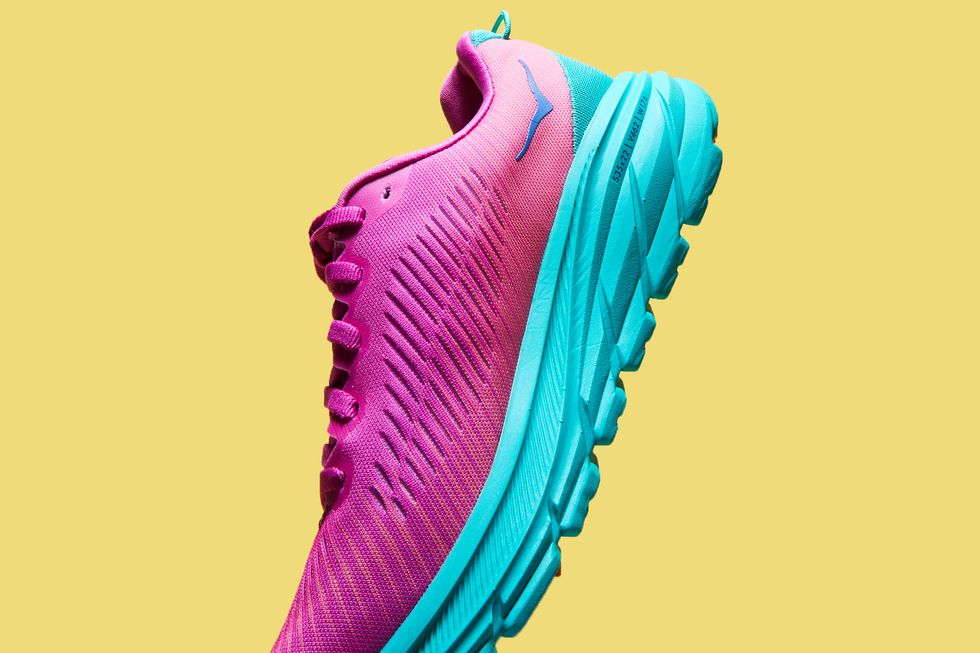Wondering how to choose the right running shoes? Team up with adidas and use our running shoe finder to choose your ideal running shoe.
THREE FACTORS TO CONSIDER WHEN BUYING RUNNING SHOES
There are lots of features in running shoes that make them tempting to pick, but to find the right pair for you, consider which features are important for your running habits.
1. WHERE DO YOU USUALLY RUN?
You might favor a responsive, cushioned shoe if you’re running on city concrete. You might choose a shoe with durable traction and support if you prefer the trails. If you’re looking for treadmill running shoes that you can also use for squats and burpees, you’ll likely want a cross-trainer.
2. WHAT LEVEL OF CUSHIONING DO YOU LIKE?
Less cushioning lets you feel the ground as you run. More cushioning delivers more comfort and energy return, but it can also mean a heavier shoe that is higher off the ground. Everyone is different, so determine what feels good to you.
3. DO YOU NEED SPECIFIC SUPPORT?
If your ankles and feet roll inward, that means you overpronate. If your weight rolls to the outside of the foot, you supinate. These movements can cause pain or discomfort, and you might benefit from a shoe with specialized support to keep your foot in a neutral position.
Now that you know the important features of a running shoe, it’s time to find the perfect pair for your running style. From the most cushioning to race-day favorites, we’re breaking down all the categories so you can find your perfect match.
Running Shoes for Energy Return
Meet the Shoe: Ultraboost 22
If cushioning is what you need in your life, the Ultraboost 22 is the runner for you.
The Ultraboost 22 offers runners cushioning, responsiveness, and comfort. The BOOST midsole provides lasting energy. Hundreds of BOOST capsules are fused together and ready to explode with energy and power every stride. The iconic BOOST midsole is paired with the adidas LEP system, blessing runners with a responsive running stride.
Like the original Ultraboost, this updated model emphasizes versatility and comfort—making it a great cross-training shoe for people who are just getting into running and an excellent recovery running shoe for more advanced runners.
Running Shoes for Comfort
Meet the Shoe: Supernova 2
If comfort is your best friend, the Supernova 2’s are the running shoe for you.
Designed to help runners run comfortably every time on any terrain, the Supernova 2’s are one of a kind. There’s a precise balance of bounce and boost in this shoe. The new padded tongue and heel patch construction delivers a comfortable feeling from the first step on. The TPU outsole delivers a superior grip that gives runners the support and comfort needed on any terrain.
The Supernova 2 was crafted to reduce the carbon footprint of the final product by 10% compared to the 2020 Supernova.
Running Shoes for Distance
Meet the Shoe: Adistar CS
Do you ever get the urge to run far? If so, the Adistar CS will go the distance with you.
A runner made for long and slow runs. The idea of perpetual motion inspired the Adistar CS. This running shoe was made to help runners reach their long-distance goals. Built for comfort and support, with a long curve-shaped angle across the forefoot, it creates a smooth, consistent rocking motion that helps you on to the next step. The full-length REPETITOR midsole, combined with a REPETITOR+ support frame, wraps around the heel and is extended on the medial side for further stabilization and support.
EVERYDAY RUNNING SHOES
Meet the Shoe: Solarglide 5
Choose the Solar Glide 5 if you want an everyday running shoe with next-level energy return.
If you are looking for a trainer to support you all day, every day, the Solarglide 5’s are the running shoes for you. These trainers are great whether you’re building consistency, upping your distance, or training for a personal best. The midsole features BOOST cushioning for maximum energy return no matter how far you go. A stability rail and molded heel work together to guide the foot without restricting natural movement to keep your stride stable and balanced.
RUNNING SHOES FOR STABILITY
Meet the Shoe: 4DFWD
The 4DFWD is a running shoe coded by athletes, for athletes. Enough said.
A smooth and comfortable run is what the 4DFWD gifts runners. The 3D midsole technology is designed to move runners forward. When the foot impacts the ground, it applies braking forces. The 4DFWD midsole reduces these forces by redirecting the impact into forward motion. With every step, 4DFWD compresses forward, providing a smooth transition and a unique experience. The Primeknit+ Upper supports the foot with a sock-like fit while letting it breathe freely.
RUNNING SHOES FOR SPEED
Meet the Shoe: Adizero Boston 11
Choose Adizero Boston for a lightweight and fast race or race-day training shoe.
Created for one of the most famous marathons in the world, the Adizero Boston 11 remains a go-to race day pick. However, this shoe is also perfect for training up for the big race. The Adizero Boston 11’s are built for mid-to-long distance runs. They welcome a race-day quality and energy to training, with a propulsive feel that comes from Energyrods. The Energyrods limit energy loss underfoot.
The newest edition of the Adizero Boston family, the 11’s fuse Lightstrike Pro+ foam for a fast, snappy feel, giving every step more energy than the last, with Lightstrike EVA for durability. Paired with the lightweight mesh upper, this shoe offers runners the ventilation and support needed during training and race day.
Consider Your Running Surface
The outsole of your running shoe is where the rubber meets the road. It is often made of a variety of rubber or foam compounds placed in strategic areas to increase wear life or enhance bounce or flexibility. Materials that provide traction and durability without adding excess weight or stiffness, and for a footprint shape that matches yours and gives you the desired level of stability underfoot.
 Lakota Gambill
Lakota Gambill
Midsole Shape
To make the shoe bend like your foot bends, many shoes use flex grooves under the ball of the foot. Turning the toe up, called toe spring, or cutting away the midsole into a rocker pattern also allows the foot to roll through the stride. Small differences in location or angle can alter the mechanics and feel, and what degree of flex works best for your stride as it changes with speed. Rocker-style midsoles tend to have more aggressive toe springs to facilitate a quick forward roll through the gait cycle. Look for a shoe that flexes or rolls the way your foot wants to move—at the pace for which you’ll be using the shoes.
 Trevor Raab
Trevor Raab
The midsole is foam material between the outsole and the upper, designed to cushion the runner from impact forces and guide the foot through the stride. Every runner will have their own preferences. Choose a midsole thickness and material that feels right at running speeds, meets your desired level of softness or firmness, and doesn’t have excess weight.
Heel and Forefoot Cushioning
Heel cushioning is the midsole material designed to minimize the impact shock of a heel strike. Besides using a variety of cushioning materials, some shoes feature a softer “crash pad” area on the outer edge of the foot or a rounded outer heel to smooth the landing. Research has shown that the body provides the majority of cushioning for your joints and that you land harder in a more cushioned shoe, so heel cushioning is largely a matter of perceived comfort. You’ll likely want a balance between cushioning, stability, and ground feel. During your test runs, note whether the shoe touches down where you expect it to and rolls into the stride smoothly.
 Lakota Gambill
Lakota Gambill
Forefoot cushioning is designed to reduce the impact of the largest forces of the stride that occur at the front of the foot during loading and push off. While body mechanics largely provide cushioning to everything above the ankle, forefoot shoe cushioning protects the structures of the foot. The promise of new “energy-return” materials and designs is that they can both protect and propel your foot. Pay attention to the shoe’s responsiveness, looking for a balance between cushioning comfort and a firm push-off platform.
Heel-Toe Drop
Drop is the difference in height between your heel and the ball of your foot when standing in the shoe. Experts disagree on the importance of drop related to injuries (remember Vibrams?), but agree that changing drop distributes forces differently to the foot and leg, and can alter your stride. Pick a shoe that feels right throughout the stride, from touchdown to toe-off, and reduces stress on any weak parts of your foot. Zero-drop shoes, like those made by Altra, place both the heel and toe equidistant from the ground.
